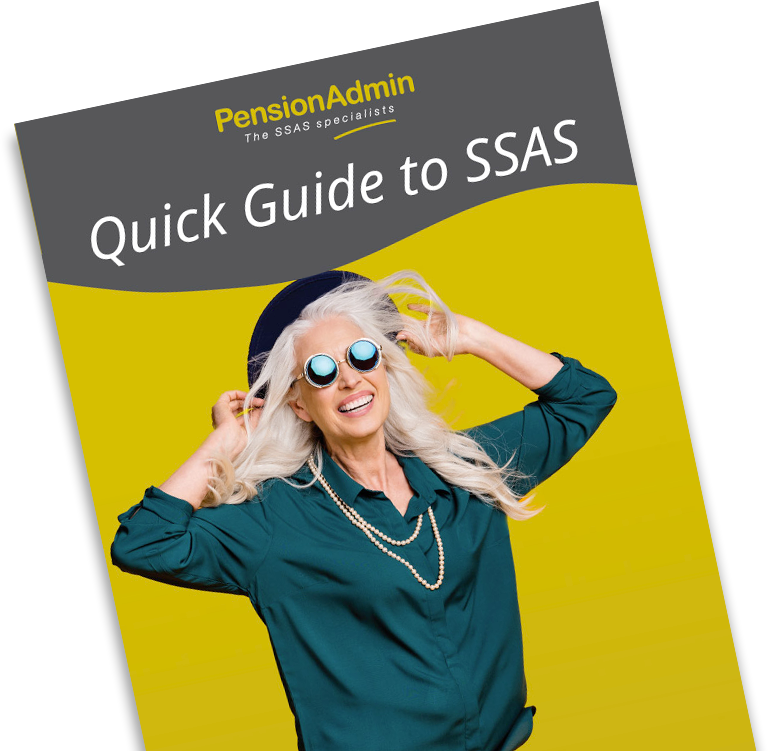Let's talk about Loanbacks
We have written an easy-to-read guide to explain what a SSAS loanback is and this will hopefully answer any questions you may have.

What exactly is a loanback?
A SSAS can make loans and it can lend money to its sponsoring employer, an associated employer (if it has been formally associated), a company which is not connected to the scheme or its members or an individual who is not connected to the scheme or its members.
However, the SSAS can’t lend to past or current scheme members, individuals connected to a member (e.g., a member’s family member), or a company connected to the member that is not an associated employer of the scheme.
Find out more about loanbacks
Loanbacks are a great benefit of SSASs. Here are some of our clients’ common questions about loans and how they work…
What can the Loanback be used for?
All loans must be made for genuine reasons of assisting the trade of the borrower and the loan must be used for this reason once paid. A few examples of this are purchase of commercial property, purchase of stock, plant or machinery.
Note here though please, loans to keep ailing businesses afloat with cash flow are not allowed.
How much can the SSAS lend?
The maximum loan which may be made to a sponsoring or associated employer is 50% of the net value of the pension scheme’s assets (50% of its value, minus any existing loans). The 50% rule does not apply to “unconnected parties” and we explain a bit more about that in further sections. If a loan exceeds the 50% limit, an unauthorised payments charge will apply. This is basically a hefty tax charge penalty applied by HMRC.
Tell me about how the loan needs to be secured?
All loans made to employers participating in the scheme must be secured throughout the term of the loan and the security requirements are:
– It must have real value and we will require an independent valuation of the asset
– The value must be at least equal to the loan capital, plus interest over the loan term
– The security must be a first legal charge over the asset
– The security does not have to be provided by the borrowing party, it can be provided by other parties such as the pension scheme members or other family members
You may be wondering what can be used as security. A few examples are commercial property, certain business assets such as stock and personal investments such as land or investment portfolios.
HMRC state that residential property can be used as security and this falls into their category of “taxable property”. This category also contains tangible moveable property and these items can be used as security, but only if two conditions are met:
1 – The SSAS does not pay for any of the fees or costs of making the loan or the legal charge
AND
2 – The legal charge document does not contain a mortgagee in possession clause, so on foreclosure the SSAS does not take ownership of the asset, but can only enforce its sale.
It is important to know that if the borrower defaults on the loan repayments or breaches the terms of the agreement, the scheme trustees must take all available steps to enforce the repayment of a loan. There must be no preferential treatment given to a sponsoring employer when enforcing the collection of the loan, even where this would result in the company being placed into liquidation.
As always, failure to comply with these conditions will have consequences: unauthorised payment charges!
What interest is payable on the loan?
All loans must charge a minimum interest rate of 1% above the “average of the six leading high street bank base rates”. For example, if the average bank base rate was 3.00%, the minimum interest payable is 4.00%.
Another great bonus of a loan to the SSAS’s sponsoring employer is that the interest payable is a business expense, which aids with reducing the company corporation tax bill!
How long can the money be lent for?
The loan term will be for 5 years and will be fully repaid (interest and capital) by the end of the term.
What is a connected party?
The HMRC’s definition of a connected party is a scheme member, spouse or relative of a scheme member; a partnership where a scheme member, spouse or relative of a scheme member is a partner; or an employer not participating in the scheme but which is controlled by a scheme member, spouse or relative of a scheme member or jointly by a number of connected parties.
What about loans to unconnected parties?
A SSAS can make loans to unconnected parties – a broad definition of this is a person or company who is not connected to a scheme member by marriage, family or business.
There are no specific terms given by HMRC with regards to an unconnected party loan but the trustees should ensure any loan is prudent, secure and on a commercial basis. There is no specific limit on the percentage of the fund that can be lent to an unconnected party either.
Loans must not be made to unconnected parties for the purpose of purchasing taxable property such as residential property, vehicles, yachts, jewellery or fine art.
How is the loan repaid?
The loan will be repaid in equal instalments of capital and interest for each complete year of the loan, whether monthly, quarterly, half-yearly or annually.

Ask us a question
If you have a question about pensions, ask us. Fill in the boxes below, hit “send it” and we will come back to you.

Download our free SSAS guide
If you are interested in learning a bit more about SSASs, please download our free SSAS guide here
